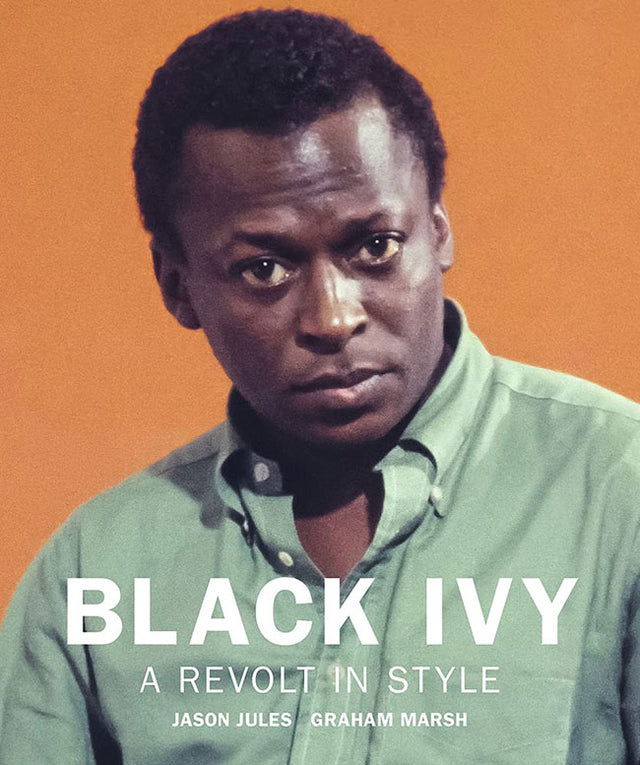Black Ivy: The Dress Code That Defined a Generation of Black Men
The mention of the “Ivy League look” conjures images of wealthy white men in smart-casual dressing—classic Oxford shirt, chinos, sports jackets and loafers. The look first emerged in the 1930s but gained massive popularity in the 1950s around country clubs and college campuses, epitomized by American brands such as Ralph Lauren and Brooks Brothers.
While the look came to be a shorthand for the social status of the wearer—white, educated male—the preppy dress code transcended its elite origins to become the chosen uniform of a generation of Black creatives and cultural leaders as well as everyday citizens.
With the book Black Ivy: A Revolt In Style, writer Jason Jules, along with art director Graham marsh, examines the adoption and subversion of the Ivy look by Black men, who took the style that was seen to belong to the privileged elite and redefined it for themselves.

As Jules writes in the book, “style is about the freedom to be oneself, to authentically express oneself and, in doing so, reject limitations imposed by others.” This is exactly how many Black artists, poets, musicians and civil rights activists in the 1950s and 1960s saw it, including the likes of Miles Davis, James Baldwin, Muhammad Ali, Martin Luther King Jr and Malcolm X.
These men used their clothing to challenge the status quo and what was expected of Black men at the time. It was hugely important to Davis that he never left the house looking anything less than “sharp as a tack”, and he was often seen in Oxford button-down shirts, suits and ascot ties.

The Black Ivy look was also championed by the thinkers and activists of the time, who used their clothes to project their identity as intellectual, honorable and radical people in the fight for equality and civil rights. “The urge to wear these clothes was in no small part born of the desire to demonstrate that equality, which had been so fiercely denied them in other ways,” Jules notes in the book.
Black Ivy explores a time when clothes were more than just fashion, and shows how style can be reframed and redefined as a response to challenging times and as a catalyst for societal change.

The book features images from some of the most prolific photographers of the era, showing men dressed in the Ivy look at leisure, at social gatherings, at demonstrations and marches, showing the intersection of cultural and sartorial history.
The influence on the Black Ivy look can still be seen today, from musician Jidenna’s “classic man” aesthetic to the late Virgil Abloh’s autumn/winter 2021 collection for Louis Vuitton. The button-down shirt, stitched loafers, the soft blazers and knit cardigans that defined the Black Ivy look are still key foundations of the modern menswear wardrobe, proving that while fashion and trends may come and go, style is, indeed, for ever.
Black Ivy: A Revolt in Style (Reel Art Press) by Jason Jules and Graham Marsh is available now

